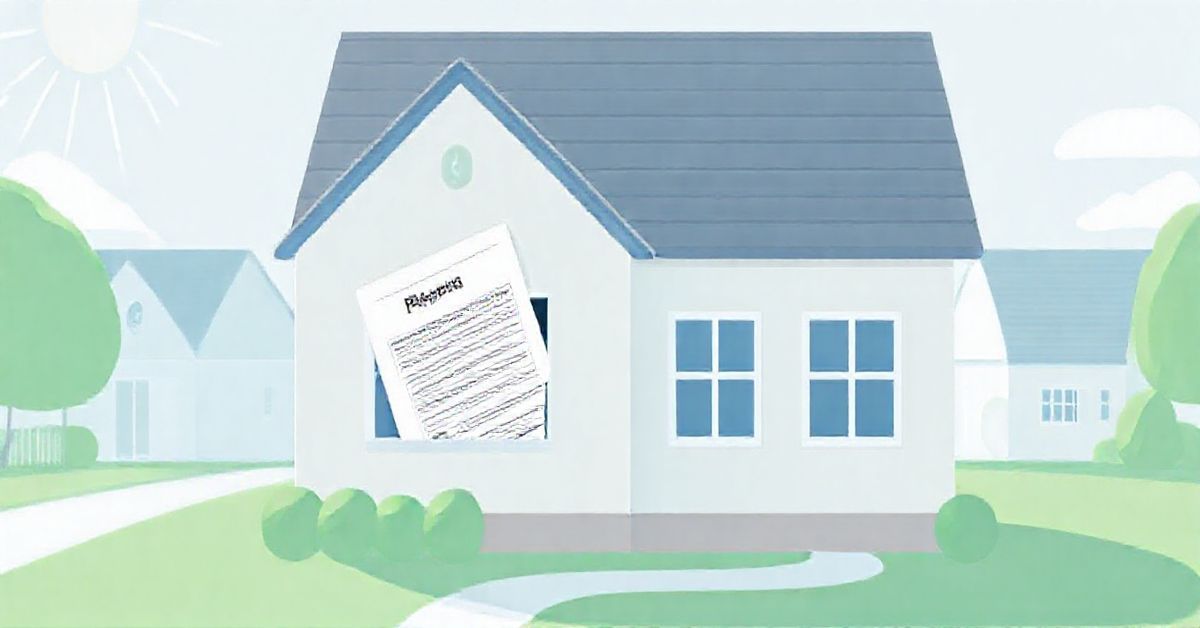What is Form 5405 and How Does it Affect My Taxes?
Have you ever heard someone mention the “first-time homebuyer credit”? It was a big deal back in 2008, designed to give people a boost into homeownership. But like many good things, there was a catch – for many recipients, it had to be paid back. This is where Form 5405 comes in. Let’s break it down in simple terms.
What was the First-Time Homebuyer Credit?
In 2008, the government created the First-Time Homebuyer Credit to help stimulate the housing market. It was essentially a tax credit – a reduction in the amount of tax you owed – to those who purchased their first home. The credit amount varied, but it helped a lot of people. However, it wasn’t just free money; most folks who received it have to pay it back, little by little, over time.
Who Got the Credit?
Generally, individuals who were first-time home buyers and had not owned a home in the last three years were eligible. There were also income restrictions and limits on the purchase price of the home.
The Catch: Repayment
The tricky part is that for many, this wasn’t a true tax credit, like a gift. It was more like an interest-free loan from the government. For most recipients, the credit has to be repaid over 15 years in equal installments. Think of it as a monthly payment, but instead of sending it to a bank, it goes back to the IRS as part of your annual tax bill.
What is Form 5405?
Form 5405 is the official IRS form used to figure out how much of the first-time homebuyer credit you owe each year. If you received the credit and you are subject to the repayment rules, you’ll likely see this form pop up annually with your tax documents until you’ve repaid the full amount or have stopped using the home as your primary residence.
How Does Form 5405 Work?
Here’s a simplified view of how Form 5405 functions:
- Identification: It starts by asking you for information like your name, Social Security number, and the year you claimed the credit.
- Repayment Schedule: The form helps you to determine your annual repayment amount.
- Exceptions: The form also has sections to note specific situations, such as if you sold your home, moved out, or if it was no longer your main home. Each of these scenarios may affect the outstanding balance of the credit you must repay.
Who Needs to File Form 5405?
You’ll need to file Form 5405 if all the following apply to you:
- You received the first-time homebuyer credit in 2008.
- You are still repaying the credit over a 15-year period.
- You are still using the home for which the credit was claimed as your main home.
You also must file the form if any of the following are true:
- You sold the home for which you received the credit.
- You stopped using the home for which you received the credit as your main home.
- You transferred ownership of the home to another person.
If you are unsure whether you need to file Form 5405, you should review the information on the IRS website or consult with a tax professional.
When Do You NOT File Form 5405?
- Full Repayment: If you have already repaid the full credit amount, you will no longer need to file this form.
- No Credit Received: If you didn’t receive the first-time homebuyer credit, then this form doesn’t apply to you at all.
What Happens if You Sell Your Home?
Selling your home impacts your first-time homebuyer credit repayment. If you sell, the full remaining balance of the credit becomes due immediately on the tax return for the year that you sold the home. Form 5405 is how you calculate this final amount.
What if You Stop Using the Home as Your Main Home?
Similarly, if you stop using the home you bought with the help of the credit as your main home, you may also need to repay the remaining credit. This might happen if you move out and rent it out, for example.
How to Complete Form 5405
Here’s a very general guide to completing the form. Remember, it’s always a good idea to review the official instructions from the IRS and get help if you need it:
- Personal Information: Start with your basic information, like your name and social security number.
- Credit Information: You’ll need to know the amount of the credit you originally claimed and the year it was claimed.
- Repayment Calculation: The form will have you determine the amount of your annual repayment based on your original credit and any exceptions you may be subject to.
- Special Circumstances: If you sold your home, moved out, or there were any changes in your situation, these are reported on the form.
- Sign and Submit: Always double-check for accuracy and submit the form with your other tax paperwork.
Tips for Filing Form 5405
- Keep Good Records: Keep all records related to your original home purchase and the credit you received.
- Follow Instructions Carefully: The IRS instructions are your best resource. Take the time to read them carefully.
- File on Time: Ensure you include form 5405 when you file your taxes each year to avoid any potential penalties and interest charges.
- Seek Help: If you are unsure of how to proceed, a tax professional can help.
- Double Check Your Work: Because the implications of getting this form wrong can be significant, it’s crucial to check your work.
Common Mistakes and Misconceptions
- Ignoring the Form: Many people may not realize they need to file this form if they received the credit years ago. It’s a good idea to double-check your past tax returns if you remember claiming the first-time homebuyer credit.
- Thinking it’s Just a Normal Tax Credit: Unlike many other tax credits, this one is primarily a loan that needs to be repaid, not a direct benefit for all.
- Misunderstanding Repayment Schedules: The exact rules for repayment can be confusing, so it is important to understand the rules for your specific situation.
Related Concepts and Terms
- Tax Credit: A direct reduction in the amount of income tax you owe.
- IRS: The Internal Revenue Service, the U.S. government agency responsible for tax collection and enforcement.
- Form 1040: The main U.S. individual income tax return form. Form 5405 will be filed with form 1040.
- Tax Year: The calendar year for which taxes are being calculated.
Why is it Important to Understand Form 5405?
Form 5405 ensures you’re properly repaying your first-time homebuyer credit. Failing to file or incorrectly filling out this form could lead to penalties and interest from the IRS, causing unnecessary headaches. It’s a small but essential part of doing your taxes correctly.
In Conclusion
Form 5405 isn’t the most common tax form, but for those who received the first-time homebuyer credit back in 2008, it’s a critical part of their annual tax return. By understanding how it works, you can make sure you’re meeting your tax obligations and avoiding any future problems with the IRS.

